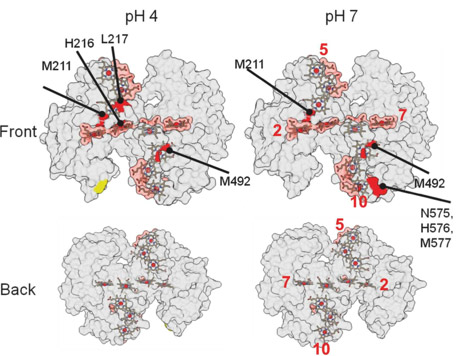
Scientific Achievement
A Foundry-led team of scientists have discovered the details of an unconventional coupling between a bacterial protein and a mineral that allows the bacterium to breathe when oxygen is not available.
Significance and Impact
The research revealed how proteins bind to mineral surfaces, which could lead to new innovations in linking proteins to other materials for bio-based electronic devices. It could also help researchers to understand and control the chemical reactions sparked by these protein-material interactions.
Research Details
- The research team used X-ray footprinting at the Advanced Light Source to pinpoint the connections between a protein from a metal-reducing bacterium and nanoparticles composed of iron and oxygen.
- The protein only interacts with the mineral in a small area, requiring about five times less binding energy, by comparison, than typical proteins that form biominerals.
- This work reveals one of nature’s strategies for achieving fast, efficient electron transfer between proteins and materials, and provides ideas for how to design proteins to make better electronic connections, allowing for development of more sensitive bioelectronic sensors and devices.

